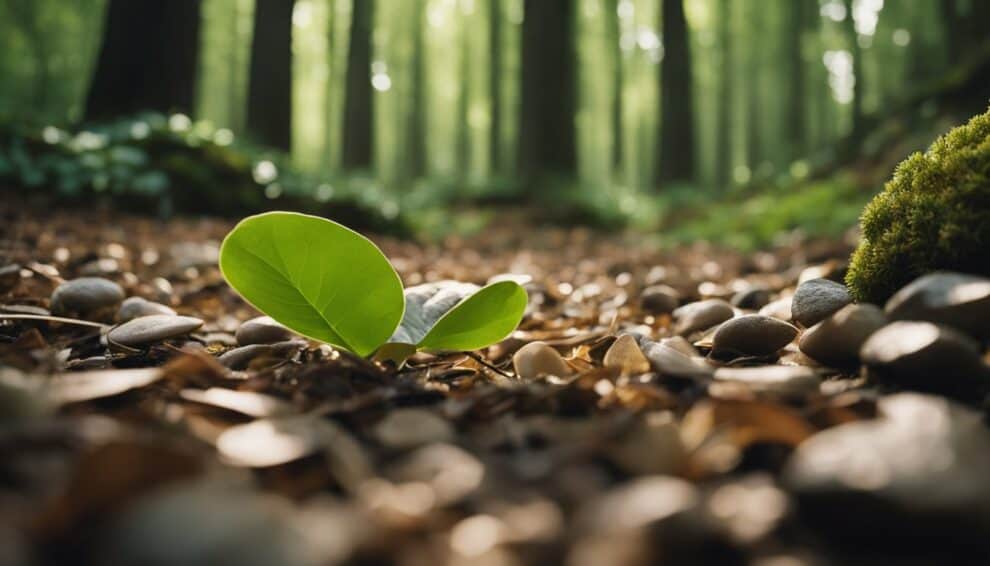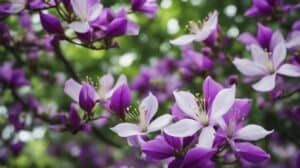Asarum Europaeum, also known as European wild ginger, is a perennial herb native to Europe and Asia.
It is a member of the Aristolochiaceae family, which includes other species of ginger plants.
The plant has been used in traditional medicine for centuries, and its popularity has grown in recent years due to its potential health benefits.

The European wild ginger is a low-growing plant that typically reaches a height of 10-15cm.
It has heart-shaped leaves that are dark green in color and grow in pairs. The plant produces small, bell-shaped flowers that are a deep maroon color.
The flowers bloom in early spring and are followed by small, spherical fruits that contain seeds.
The plant prefers shady, damp environments and can often be found in woodland areas.
Despite its name, the European wild ginger is not related to the common ginger used in cooking.
However, it is still used in culinary applications in some parts of Europe, particularly in Scandinavia where it is used to flavor schnapps and liqueurs.
In addition to its culinary uses, the plant has been used in traditional medicine for a variety of ailments, including digestive issues, respiratory problems, and menstrual cramps.
Its potential health benefits are currently being studied by researchers, and the plant is gaining popularity as a natural remedy for various health conditions.
Botanical Profile of Asarum Europaeum

Species Classification
Asarum Europaeum, commonly known as European Wild Ginger, belongs to the family Aristolochiaceae.
It is a perennial herbaceous plant that is native to Europe and parts of Asia.
The plant is known for its medicinal properties and has been used for centuries to treat various ailments.
Morphological Characteristics
Asarum Europaeum grows up to a height of 15-20 cm and spreads up to 30 cm.
The plant has a rhizomatous root system and produces heart-shaped leaves that are dark green in color.
The leaves are approximately 4-10 cm in length and 3-8 cm in width. The flowers of the plant are bell-shaped and have a dark red color.
They bloom in early spring and are pollinated by insects.
The plant prefers to grow in moist and shady areas such as woodland floors and riverbanks.
It can tolerate a wide range of soil types but prefers well-drained soils.
Asarum Europaeum is known to be a slow-growing plant and can take up to 5 years to reach maturity.
In conclusion, Asarum Europaeum is a valuable plant with medicinal properties and is a great addition to any garden.
Its unique morphological characteristics and adaptability make it a fascinating plant to observe and study.
Habitat and Distribution

Asarum Europaeum, commonly known as European Wild Ginger, is a low-growing perennial herb that is native to Europe and parts of Asia.
It is a member of the Aristolochiaceae family and is commonly found in deciduous forests, under shrubs, and in shaded areas.
Geographical Range
Asarum Europaeum is widely distributed throughout Europe, from the southern regions of Scandinavia to the Mediterranean.
It can also be found in parts of Asia, including the Caucasus Mountains and western Siberia.
The plant is particularly abundant in the central and eastern regions of Europe, where it is often found in large colonies.
Preferred Soil Conditions
European Wild Ginger prefers moist, well-drained soil that is rich in organic matter.
It thrives in shaded areas and is often found growing under trees and shrubs.
The plant is tolerant of a wide range of soil types, including loam, clay, and sandy soils.
In conclusion, Asarum Europaeum is a fascinating and unique plant that is widely distributed throughout Europe and parts of Asia.
Its preference for moist, shaded areas makes it an ideal addition to any garden or woodland area.
Cultivation and Uses

Gardening and Landscape
Asarum Europaeum, commonly known as European Wild Ginger, is a popular plant for gardeners and landscapers due to its unique foliage and low maintenance requirements.
It grows well in shaded areas and prefers moist, well-drained soil.
In the garden, it can be used as a ground cover, border plant, or as an accent in rock gardens.
European Wild Ginger is a slow-growing plant and can take up to three years to establish.
It is important to note that it is a clumping plant and can spread up to 12 inches wide.
Gardeners should take care to plant it in an area where it has room to grow and will not overcrowd other plants.
Medicinal Applications
Asarum Europaeum has been used for centuries in traditional medicine for a variety of ailments.
It contains several bioactive compounds, including aristolochic acid, which has been shown to have anti-inflammatory and antimicrobial properties.
The plant has been used to treat headaches, menstrual cramps, and digestive issues. It has also been used as a diuretic and to stimulate the appetite.
However, it is important to note that aristolochic acid can be toxic in large doses and should only be used under the guidance of a healthcare professional.
In modern medicine, Asarum Europaeum is being studied for its potential use in treating cancer and other diseases.
While more research is needed, the plant shows promise as a source of natural compounds that could be used in drug development.
Overall, Asarum Europaeum is a versatile plant with both ornamental and medicinal uses.
Its unique foliage and low maintenance requirements make it a popular choice for gardeners and landscapers, while its potential health benefits make it an exciting area of research in the field of medicine.
Frequently Asked Questions

How do you propagate Asarum europaeum?
Asarum europaeum can be propagated through division or by taking stem cuttings. Division should be done in the spring or fall when the plant is dormant.
Cuttings should be taken in the summer and rooted in a moist soilless mix.
What are the ideal care conditions for European Wild Ginger?
Asarum europaeum prefers a shady location with moist, well-draining soil that is rich in organic matter.
It can tolerate some sun but is best grown in partial to full shade. The plant should be kept consistently moist but not waterlogged.
What size does European Wild Ginger typically reach?
Asarum europaeum is a low-growing groundcover that typically reaches a height of 6 to 8 inches and a spread of 12 to 18 inches.
Are there any toxicity concerns with Asarum europaeum?
Yes, all parts of Asarum europaeum are toxic if ingested.
The plant contains aristolochic acid, which can cause kidney damage and cancer in humans and animals.
It is important to wear gloves when handling the plant and to keep it away from children and pets.
How can I grow European ginger from seeds?
Asarum europaeum can be grown from seed, but it can be slow to germinate and may take up to two years to establish.
The seeds should be sown in the fall in a moist soilless mix and kept at a temperature of 60 to 70 degrees Fahrenheit.
What are the environmental impacts of wild ginger being invasive?
Asarum europaeum is not considered invasive in North America, but some other species of Asarum can be.
Invasive species can outcompete native plants and disrupt ecosystems, leading to a loss of biodiversity.
It is important to only plant non-invasive species and to properly dispose of any invasive plants.














